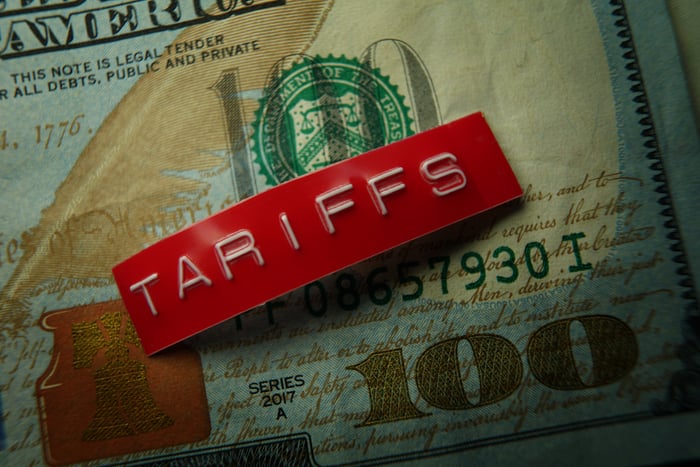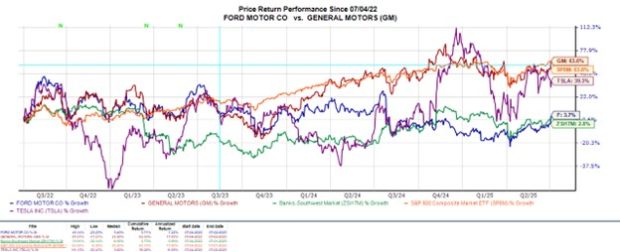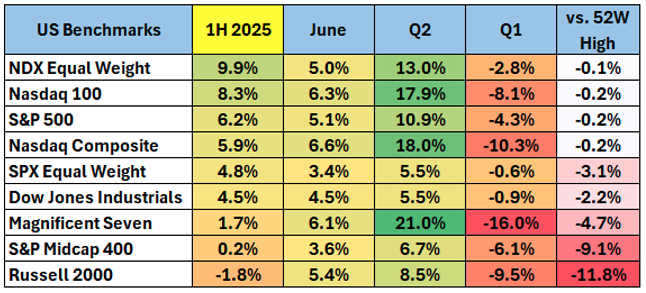Apple Earnings Call Highlights Tariff Concerns over AI Discussions
Apple (NASDAQ: AAPL) held its fiscal 2025 second-quarter earnings call after the market closed on Thursday. Unlike previous calls where artificial intelligence (AI) was the main topic, this time both Apple’s management and analysts focused on tariffs.
How are the Trump administration’s tariffs impacting Apple? Here are 10 key points investors should note.

Image source: Getty Images.
1. Limited Impact from Tariffs in Q2
Apple’s revenue for fiscal Q2 rose 5% year over year to $95.4 billion, with earnings per share increasing by 8% to $1.65. Both figures surpassed Wall Street’s expectations. CEO Tim Cook noted during the earnings call that the company experienced “limited impact from tariffs” in the March quarter.
2. Limited Pull-Forward Demand Observed
Speculation suggested that consumers might boost iPhone purchases ahead of potential tariff-related price increases. However, Cook indicated that Apple did not see a significant “pull forward in demand.” He added that the company’s channel inventory levels at the start and end of fiscal Q2 for iPhones and other products remained consistent.
3. Projected Tariff Costs of $900 Million in Q3
Although Apple faced minimal tariff impact in fiscal Q2, the company projects a rise in tariff-related costs of around $900 million for Q3. This figure is relatively low, surprising at least one analyst during the earnings call.
4. Inventory Buildup to Mitigate Tariff Effects
Apple’s preparation for tariff impacts is evident through its significant inventory buildup. While specific numbers were not disclosed, the company’s quarterly regulatory filing indicated manufacturing purchase obligations of $38.4 billion as of March 29, 2025, up from $34.2 billion a year earlier.
5. Majority of Q3 iPhones Originating from India
As the highest tariffs affect imports from China, Apple anticipates that most iPhones sold in the U.S. during fiscal Q3 will be manufactured in India. Similarly, the majority of AirPods, Apple Watches, iPads, and Macs sold in the U.S. during this period will originate from Vietnam. China will still supply most products sold outside the U.S.
6. Exposure to 145% Tariffs on Certain Products
Some Apple products, specifically AppleCare and accessories sold in the U.S., are subject to the steep 145% tariffs on Chinese imports. Cook confirmed this during the earnings call, although the overall exposure remains limited.
7. Most Products Free from Global Reciprocal Tariffs
Currently, the global reciprocal tariffs announced by the Trump administration in April 2025 do not apply to most Apple products. This is partly due to an ongoing Section 232 investigation by the U.S. Commerce Department concerning the impact of tariffs on semiconductors and related products.
8. February IEEPA Tariffs Affecting Q2 and Q3
Cook addressed the ongoing tariff exposure during fiscal Q2 and Q3, attributing it primarily to President Trump’s February 2025 tariffs on imports from Canada, Mexico, and China under the International Emergency Economic Powers Act (IEEPA). This authority was enacted in response to a declared national emergency related to fentanyl and drug trafficking.
9. Uncertainty Regarding Price Increases
In response to inquiries about potential tariff-related price hikes, Cook stated, “On the pricing piece, we have nothing to announce today.” While no news was shared, it seems likely that Apple may consider passing increased costs to consumers rather than absorbing them.
10. General Market Uncertainty
Throughout the call, the term “uncertainty” surfaced multiple times. Executives highlighted that expectations for the future hinge on the assumption that “the global macroeconomic outlook doesn’t worsen.”
Should You Invest $1,000 in Apple Now?
Before making investment decisions regarding Apple, consider this:
Analysts recently identified what they believe to be the 10 best stocks to buy now, and Apple did not make the list.
Keith Speights has positions in Apple. The Motley Fool has positions in and recommends Apple.
The views and opinions expressed herein are those of the author and do not necessarily reflect those of Nasdaq, Inc.






